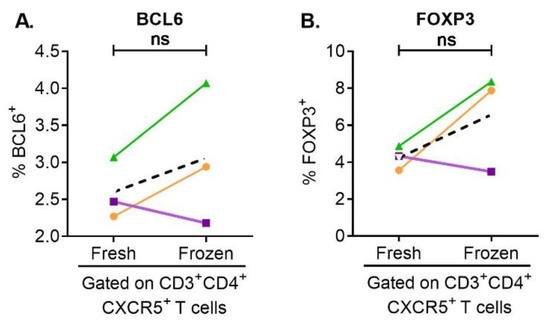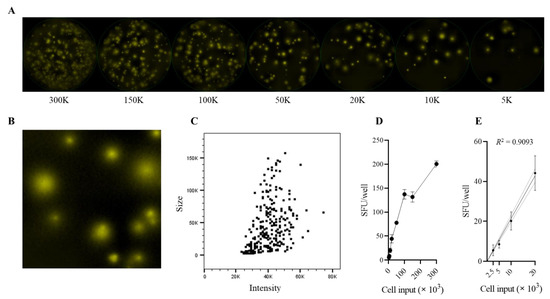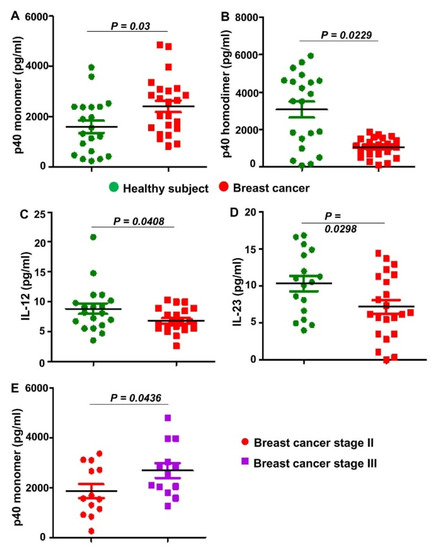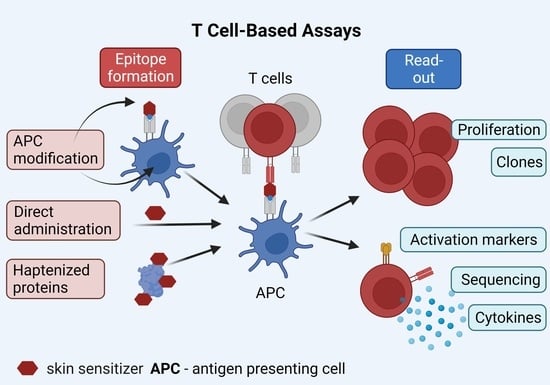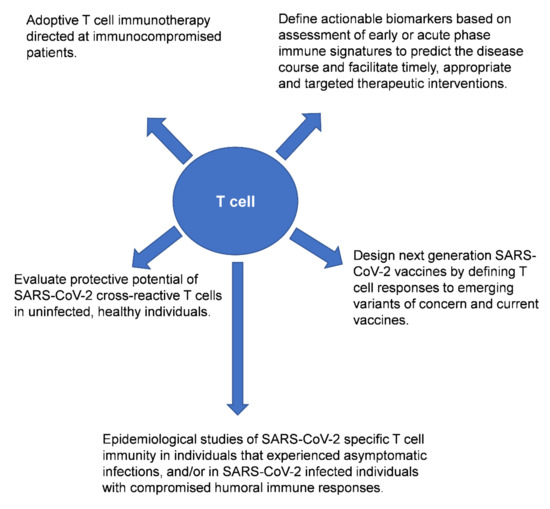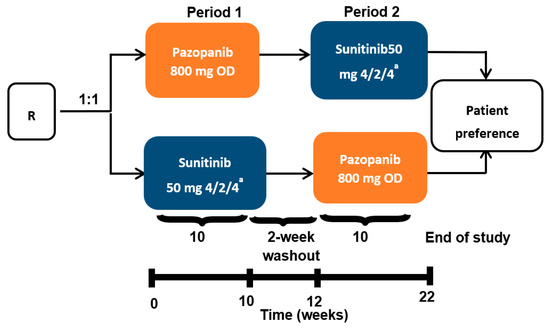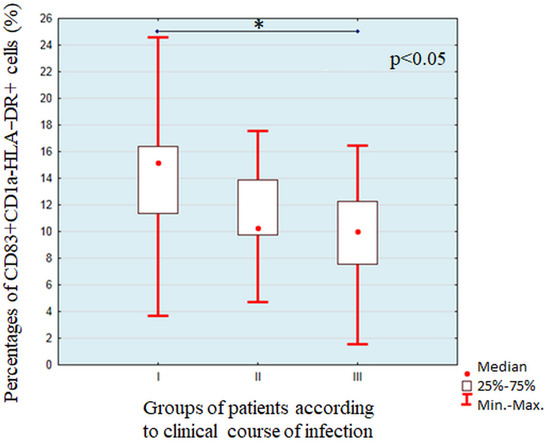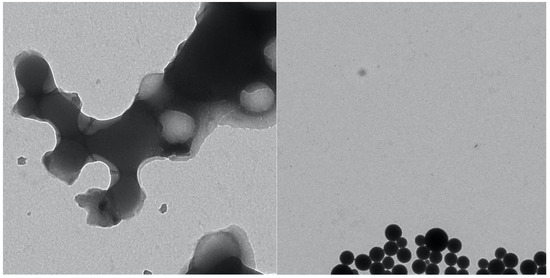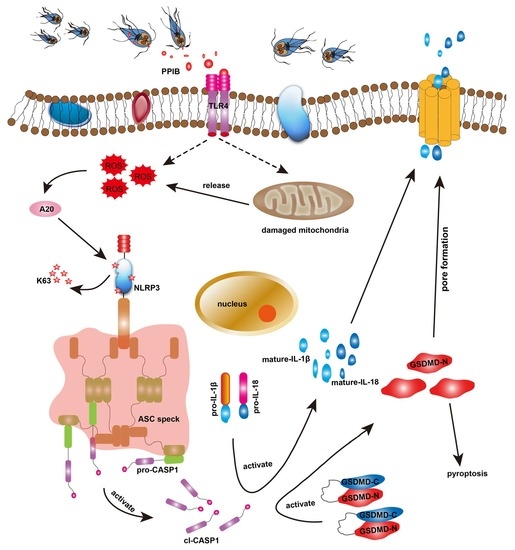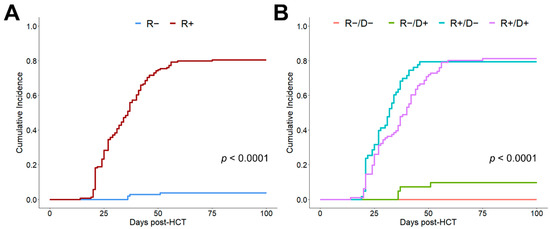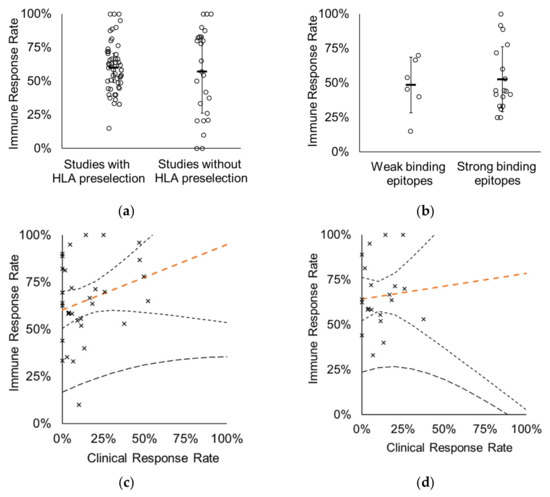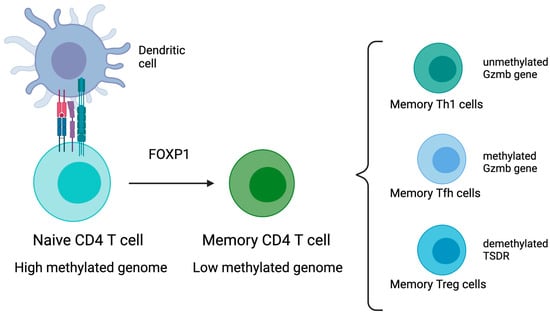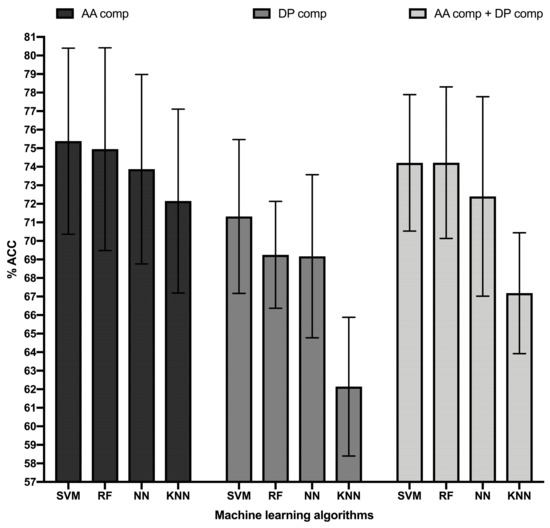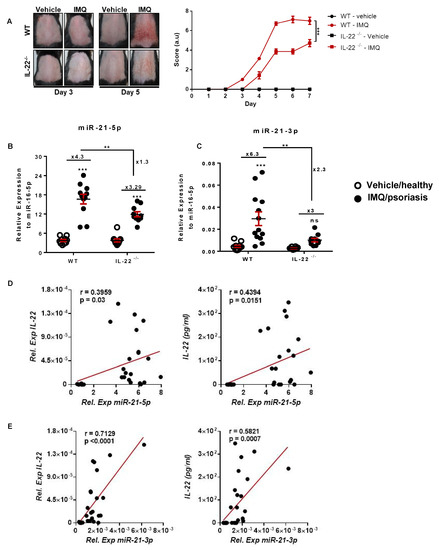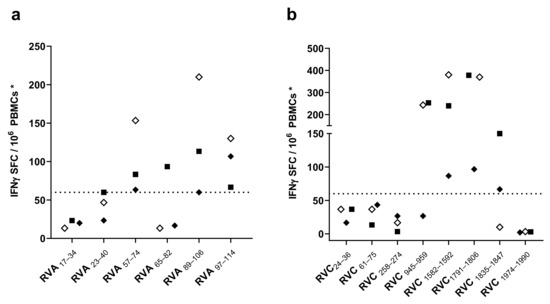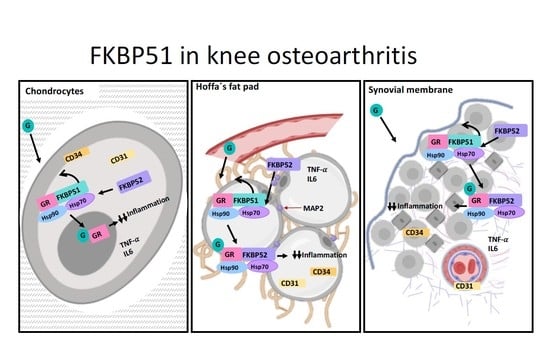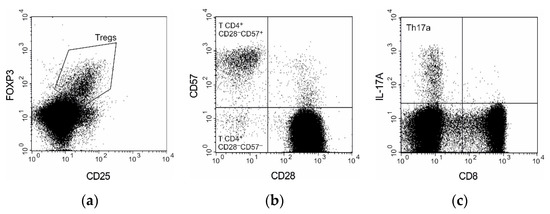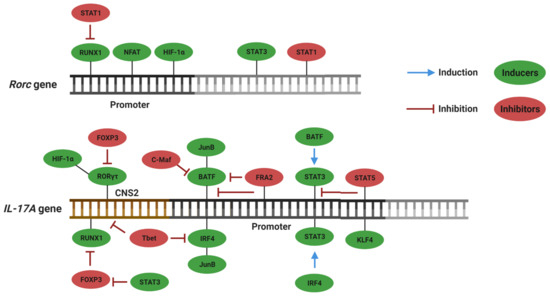Advances in Immune Monitoring
(Closed)
A topical collection in Cells (ISSN 2073-4409). This collection belongs to the section "Cellular Immunology".
Viewed by 77222
Share This Topical Collection
Editors
Topical Collection Information
Dear Colleagues,
The immune system responds to antigen encounters by mounting immune responses of various types, whereby the outcome may be either advantageous or even harmful to the host. Immune monitoring aims to define the magnitude and quality of antigen-specific T and B cell reactivity in a subject.
T cell immune monitoring critically depends upon the choice of peptides used for detection of antigen-specific cells. In this regard, there are presently two incompatible schools of thought prevailing in the T cell immune monitoring field. One maintains that peptides targeted by T cells (T cell epitopes) can reliably be predicted in silico based upon a subject’s HLA type, and that by extension, T cells in all individuals who share a particular HLA allele will respond in a dominant fashion to these select peptides. This assumption is at the core of T cell monitoring using peptide-MHC multimers for surface staining and identification of antigen-specific T cell populations. The other school of thought maintains that reliable immune monitoring is not possible using a limited number of peptides due to the inherent HLA diversity in the human population, the large number of potential T cell epitopes in complex antigens, and the unpredictable nature of T cell epitope dominance. As such, the latter school calls for agnostic T cell monitoring using mega peptide pools that encompass all potential epitopes of the antigen. As one primary focus, this collection invites contributions from various fields of immunology that help resolve this debate on reliable detection of antigen-specific T cell responses.
A central yet highly controversial issue for T cells immune monitoring is also how promiscuous T cell epitope recognition is. Are cross-reactivities common, as some claim, or are they very rare, as others maintain? How common are false positive T cell assay results in subjects who have not been exposed to a foreign antigen? Are autoantigen/tumor-associated antigen-reactive T cells frequently found in a primed state in healthy subjects? We are inviting manuscripts that help in progress resolving the specificity debate.
B cell immune monitoring has traditionally relied upon serum antibody measurements, and not upon the assessment of memory B cells that can give rise to subsequent antibody responses. Importantly, immunoglobin proteins are short-lived products derived from differentiated plasma cells and require continuous replenishment for maintenance. Moreover, since antibody levels can wane in the absence of antigen re-exposure, the lack of serum antibody reactivity may not be a reliable indicator of the host’s ability to engage in a rapid secondary antibody response upon reactivation of antigen-specific memory B cells. In this context, and as an additional focus of this collection, we invite contributions that address the concordance or discordance of seropositivity with direct assessment of B cell memory.
In this Special Issue, original research articles and reviews on the above topics are invited. Articles will be peer-reviewed and published in the open access journal Cells (Impact Factor 5.656, ISSN 2073-4409). We look forward to your contributions.
Dr. Paul V. Lehmann
Dr. Greg A. Kirchenbaum
Guest Editors
Manuscript Submission Information
Manuscripts should be submitted online at www.mdpi.com by registering and logging in to this website. Once you are registered, click here to go to the submission form. Manuscripts can be submitted until the deadline. All submissions that pass pre-check are peer-reviewed. Accepted papers will be published continuously in the journal (as soon as accepted) and will be listed together on the collection website. Research articles, review articles as well as short communications are invited. For planned papers, a title and short abstract (about 100 words) can be sent to the Editorial Office for announcement on this website.
Submitted manuscripts should not have been published previously, nor be under consideration for publication elsewhere (except conference proceedings papers). All manuscripts are thoroughly refereed through a single-blind peer-review process. A guide for authors and other relevant information for submission of manuscripts is available on the Instructions for Authors page. Cells is an international peer-reviewed open access semimonthly journal published by MDPI.
Please visit the Instructions for Authors page before submitting a manuscript.
The Article Processing Charge (APC) for publication in this open access journal is 2700 CHF (Swiss Francs).
Submitted papers should be well formatted and use good English. Authors may use MDPI's
English editing service prior to publication or during author revisions.
Keywords
- T cell specificity
- T cell cross-reactivity
- T cell epitope dominance
- T cell epitope prediction
- Multimers (tetramers/pentamers/dextramers).
- ELISPOT/Fluorospot/ImmunoSpot
- Immune Diagnostic
- Vaccines
- Infections
- Autoimmunity
- T cell memory
- B cell memory
Related Special Issue
Published Papers (25 papers)
Open AccessArticle
Trajectory of Spike-Specific B Cells Elicited by Two Doses of BNT162b2 mRNA Vaccine
by
Annalisa Ciabattini, Gabiria Pastore, Simone Lucchesi, Giorgio Montesi, Simone Costagli, Jacopo Polvere, Fabio Fiorino, Elena Pettini, Arianna Lippi, Leonardo Ancillotti, Mario Tumbarello, Massimiliano Fabbiani, Francesca Montagnani and Donata Medaglini
Cited by 4 | Viewed by 1318
Abstract
The mRNA vaccines for SARS-CoV-2 have demonstrated efficacy and immunogenicity in the real-world setting. However, most of the research on vaccine immunogenicity has been centered on characterizing the antibody response, with limited exploration into the persistence of spike-specific memory B cells. Here we
[...] Read more.
The mRNA vaccines for SARS-CoV-2 have demonstrated efficacy and immunogenicity in the real-world setting. However, most of the research on vaccine immunogenicity has been centered on characterizing the antibody response, with limited exploration into the persistence of spike-specific memory B cells. Here we monitored the durability of the memory B cell response up to 9 months post-vaccination, and characterized the trajectory of spike-specific B cell phenotypes in healthy individuals who received two doses of the BNT162b2 vaccine. To profile the spike-specific B cell response, we applied the tSNE and Cytotree automated approaches. Spike-specific IgA
+ and IgG
+ plasmablasts and IgA
+ activated cells were observed 7 days after the second dose and disappeared 3 months later, while subsets of spike-specific IgG
+ resting memory B cells became predominant 9 months after vaccination, and they were capable of differentiating into spike-specific IgG secreting cells when restimulated in vitro. Other subsets of spike-specific B cells, such as IgM
+ or unswitched IgM
+IgD
+ or IgG
+ double negative/atypical cells, were also elicited by the BNT162b2 vaccine and persisted up to month 9. The analysis of circulating spike-specific IgG, IgA, and IgM was in line with the plasmablasts observed. The longitudinal analysis of the antigen-specific B cell response elicited by mRNA-based vaccines provides valuable insights into our understanding of the immunogenicity of this novel vaccine platform destined for future widespread use, and it can help in guiding future decisions and vaccination schedules.
Full article
►▼
Show Figures
Open AccessArticle
Characterization of T Follicular Helper Cells and T Follicular Regulatory Cells in HIV-Infected and Sero-Negative Individuals
by
Bradley Salvatore, Rachel S. Resop, Brent R. Gordon, Marta Epeldegui, Otoniel Martinez-Maza, Begoña Comin-Anduix, Alex Lam, Ting-Ting Wu and Christel H. Uittenbogaart
Viewed by 2174
Abstract
Humoral immune response is important in fighting pathogens by the production of specific antibodies by B cells. In germinal centers, T follicular helper (TFH) cells provide important help to B-cell antibody production but also contribute to HIV persistence. T follicular regulatory (TFR) cells,
[...] Read more.
Humoral immune response is important in fighting pathogens by the production of specific antibodies by B cells. In germinal centers, T follicular helper (TFH) cells provide important help to B-cell antibody production but also contribute to HIV persistence. T follicular regulatory (TFR) cells, which inhibit the function of TFH cells, express similar surface markers. Since FOXP3 is the only marker that distinguishes TFR from TFH cells it is unknown whether the increase in TFH cells observed in HIV infection and HIV persistence may be partly due to an increase in TFR cells. Using multicolor flow cytometry to detect TFH and TFR cells in cryopreserved peripheral blood mononuclear cells from HIV-infected and non-infected participants in the UCLA Multicenter AIDS Cohort Study (MACS), we identified CD3
+CXCR5
+CD4
+CD8
−BCL6
+ peripheral blood TFH (pTFH) cells and CD3
+CXCR5
+CD4
+CD8
−FOXP3
+ peripheral blood TFR (pTFR) cells. Unlike TFR cells in germinal centers, pTFR cells do not express B cell lymphoma 6 (BCL6), a TFH cell master transcriptional regulator. Our major findings are that the frequency of pTFH cells, but not pTFR cells was higher in HIV-infected participants of the MACS and that pTFH cells expressed less CCR5 in HIV-infected MACS participants. Constitutive expression of CCR5 in TFR cells supports their potential to contribute to HIV persistence.
Full article
►▼
Show Figures
Open AccessArticle
Antibody Levels Poorly Reflect on the Frequency of Memory B Cells Generated following SARS-CoV-2, Seasonal Influenza, or EBV Infection
by
Carla Wolf, Sebastian Köppert, Noémi Becza, Stefanie Kuerten, Greg A. Kirchenbaum and Paul V. Lehmann
Cited by 7 | Viewed by 3226
Abstract
The scope of immune monitoring is to define the existence, magnitude, and quality of immune mechanisms operational in a host. In clinical trials and praxis, the assessment of humoral immunity is commonly confined to measurements of serum antibody reactivity without accounting for the
[...] Read more.
The scope of immune monitoring is to define the existence, magnitude, and quality of immune mechanisms operational in a host. In clinical trials and praxis, the assessment of humoral immunity is commonly confined to measurements of serum antibody reactivity without accounting for the memory B cell potential. Relying on fundamentally different mechanisms, however, passive immunity conveyed by pre-existing antibodies needs to be distinguished from active B cell memory. Here, we tested whether, in healthy human individuals, the antibody titers to SARS-CoV-2, seasonal influenza, or Epstein–Barr virus antigens correlated with the frequency of recirculating memory B cells reactive with the respective antigens. Weak correlations were found. The data suggest that the assessment of humoral immunity by measurement of antibody levels does not reflect on memory B cell frequencies and thus an individual’s potential to engage in an anamnestic antibody response against the same or an antigenically related virus. Direct monitoring of the antigen-reactive memory B cell compartment is both required and feasible towards that goal.
Full article
►▼
Show Figures
Open AccessReview
Immunoregulation via Cell Density and Quorum Sensing-like Mechanisms: An Underexplored Emerging Field with Potential Translational Implications
by
Adrian A. Naoun, Itay Raphael and Thomas G. Forsthuber
Cited by 2 | Viewed by 2741
Abstract
Quorum sensing (QS) was historically described as a mechanism by which bacteria detect and optimize their population density via gene regulation based on dynamic environmental cues. Recently, it was proposed that QS or similar mechanisms may have broader applications across different species and
[...] Read more.
Quorum sensing (QS) was historically described as a mechanism by which bacteria detect and optimize their population density via gene regulation based on dynamic environmental cues. Recently, it was proposed that QS or similar mechanisms may have broader applications across different species and cell types. Indeed, emerging evidence shows that the mammalian immune system can also elicit coordinated responses on a population level to regulate cell density and function, thus suggesting that QS-like mechanisms may also be a beneficial trait of the immune system. In this review, we explore and discuss potential QS-like mechanisms deployed by the immune system to coordinate cellular-level responses, such as T cell responses mediated via the common gamma chain (γc) receptor cytokines and the aryl hydrocarbon receptors (AhRs). We present evidence regarding a novel role of QS as a multifunctional mechanism coordinating CD4
+ and CD8
+ T cell behavior during steady state and in response to infection, inflammatory diseases, and cancer. Successful clinical therapies such as adoptive cell transfer for cancer treatment may be re-evaluated to harness the effects of the QS mechanism(s) and enhance treatment responsiveness. Moreover, we discuss how signaling threshold perturbations through QS-like mediators may result in disturbances of the complex crosstalk between immune cell populations, undesired T cell responses, and induction of autoimmune pathology. Finally, we discuss the potential therapeutic role of modulating immune-system-related QS as a promising avenue to treat human diseases.
Full article
►▼
Show Figures
Open AccessArticle
Designing Personalized Antigen-Specific Immunotherapies for Autoimmune Diseases—The Case for Using Ignored Target Cell Antigen Determinants
by
Jide Tian, Min Song and Daniel L. Kaufman
Cited by 3 | Viewed by 2456
Abstract
We have proposed that antigen-specific immunotherapies (ASIs) for autoimmune diseases could be enhanced by administering target cell antigen epitopes (determinants) that are immunogenic but ignored by autoreactive T cells because these determinants may have large pools of naïve cognate T cells available for
[...] Read more.
We have proposed that antigen-specific immunotherapies (ASIs) for autoimmune diseases could be enhanced by administering target cell antigen epitopes (determinants) that are immunogenic but ignored by autoreactive T cells because these determinants may have large pools of naïve cognate T cells available for priming towards regulatory responses. Here, we identified an immunogenic preproinsulin determinant (PPI
L4-20) that was ignored by autoimmune responses in type 1 diabetes (T1D)-prone NOD mice. The size of the PPI
L4-20-specific splenic naive T cell pool gradually increased from 2–12 weeks in age and remained stable thereafter, while that of the major target determinant insulin B-chain
9-23 decreased greatly after 12 weeks in age, presumably due to recruitment into the autoimmune response. In 15–16 week old mice, insulin B-chain
9-23/alum immunization induced modest-low level of splenic T cell IL-10 and IL-4 responses, little or no spreading of these responses, and boosted IFNγ responses to itself and other autoantigens. In contrast, PPI
L4-20/alum treatment induced robust IL-10 and IL-4 responses, which spread to other autoantigens and increased the frequency of splenic IL-10-secreting Treg and Tr-1-like cells, without boosting IFNγ responses to ß-cell autoantigens. In newly diabetic NOD mice, PPI
L4-20, but not insulin B-chain
9-23 administered intraperitoneally (with alum) or intradermally (as soluble antigen) supplemented with oral GABA induced long-term disease remission. We discuss the potential of personalized ASIs that are based on an individual’s naïve autoantigen-reactive T cell pools and the use of HLA-appropriate ignored autoantigen determinants to safely enhance the efficacy of ASIs.
Full article
►▼
Show Figures
Open AccessArticle
Regression of Triple-Negative Breast Cancer in a Patient-Derived Xenograft Mouse Model by Monoclonal Antibodies against IL-12 p40 Monomer
by
Madhuchhanda Kundu, Sumita Raha, Avik Roy and Kalipada Pahan
Cited by 6 | Viewed by 2473
Abstract
Although some therapies are available for regular breast cancers, there are very few options for triple-negative breast cancer (TNBC). Here, we demonstrated that serum level of IL-12p40 monomer (p40) was much higher in breast cancer patients than healthy controls. On the other hand,
[...] Read more.
Although some therapies are available for regular breast cancers, there are very few options for triple-negative breast cancer (TNBC). Here, we demonstrated that serum level of IL-12p40 monomer (p40) was much higher in breast cancer patients than healthy controls. On the other hand, levels of IL-12, IL-23 and p40 homodimer (p40
2) were lower in serum of breast cancer patients as compared to healthy controls. Similarly, human TNBC cells produced greater level of p40 than p40
2. The level of p40 was also larger than p40
2 in serum of a patient-derived xenograft (PDX) mouse model. Accordingly, neutralization of p40 by p40 mAb induced death of human TNBC cells and tumor shrinkage in PDX mice. While investigating the mechanism, we found that neutralization of p40 led to upregulation of human CD4
+IFNγ
+ and CD8
+IFNγ
+ T cell populations, thereby increasing the level of human IFNγ and decreasing the level of human IL-10 in PDX mice. Finally, we demonstrated the infiltration of human cytotoxic T cells, switching of tumor-associated macrophage M2 (TAM2) to TAM1 and suppression of transforming growth factor β (TGFβ) in tumor tissues of p40 mAb-treated PDX mice. Our studies identify a possible new immunotherapy for TNBC in which p40 mAb inhibits tumor growth in PDX mice.
Full article
►▼
Show Figures
Open AccessFeature PaperReview
In Vitro Monitoring of Human T Cell Responses to Skin Sensitizing Chemicals—A Systematic Review
by
Marina Aparicio-Soto, Caterina Curato, Franziska Riedel, Hermann-Josef Thierse, Andreas Luch and Katherina Siewert
Cited by 7 | Viewed by 2730
Abstract
Background: Chemical allergies are T cell-mediated diseases that often manifest in the skin as allergic contact dermatitis (ACD). To prevent ACD on a public health scale and avoid elicitation reactions at the individual patient level, predictive and diagnostic tests, respectively, are indispensable. Currently,
[...] Read more.
Background: Chemical allergies are T cell-mediated diseases that often manifest in the skin as allergic contact dermatitis (ACD). To prevent ACD on a public health scale and avoid elicitation reactions at the individual patient level, predictive and diagnostic tests, respectively, are indispensable. Currently, there is no validated in vitro T cell assay available. The main bottlenecks concern the inefficient generation of T cell epitopes and the detection of rare antigen-specific T cells. Methods: Here, we systematically review original experimental research papers describing T cell activation to chemical skin sensitizers. We focus our search on studies published in the PubMed and Scopus databases on non-metallic allergens in the last 20 years. Results: We identified 37 papers, among them 32 (86%) describing antigen-specific human T cell activation to 31 different chemical allergens. The remaining studies measured the general effects of chemical allergens on T cell function (five studies, 14%). Most antigen-specific studies used peripheral blood mononuclear cells (PBMC) as antigen-presenting cells (APC, 75%) and interrogated the blood T cell pool (91%). Depending on the individual chemical properties, T cell epitopes were generated either by direct administration into the culture medium (72%), separate modification of autologous APC (29%) or by use of hapten-modified model proteins (13%). Read-outs were mainly based on proliferation (91%), often combined with cytokine secretion (53%). The analysis of T cell clones offers additional opportunities to elucidate the mechanisms of epitope formation and cross-reactivity (13%). The best researched allergen was
p-phenylenediamine (PPD, 12 studies, 38%). For this and some other allergens, stronger immune responses were observed in some allergic patients (15/31 chemicals, 48%), illustrating the in vivo relevance of the identified T cells while detection limits remain challenging in many cases. Interpretation: Our results illustrate current hardships and possible solutions to monitoring T cell responses to individual chemical skin sensitizers. The provided data can guide the further development of T cell assays to unfold their full predictive and diagnostic potential, including cross-reactivity assessments.
Full article
►▼
Show Figures
Open AccessReview
Elucidating T Cell and B Cell Responses to SARS-CoV-2 in Humans: Gaining Insights into Protective Immunity and Immunopathology
by
Aaruni Khanolkar
Cited by 8 | Viewed by 3827
Abstract
The SARS-CoV-2 pandemic is an unprecedented epochal event on at least two fronts. Firstly, in terms of the rapid spread and the magnitude of the outbreak, and secondly, on account of the equally swift response of the scientific community that has galvanized itself
[...] Read more.
The SARS-CoV-2 pandemic is an unprecedented epochal event on at least two fronts. Firstly, in terms of the rapid spread and the magnitude of the outbreak, and secondly, on account of the equally swift response of the scientific community that has galvanized itself into action and has successfully developed, tested and deployed highly effective and novel vaccines in record time to combat the virus. The sophistication and diversification of the scientific toolbox we now have at our disposal has enabled us to interrogate both the breadth and the depth of the immune response to a degree that is unparalleled in recent memory. In terms of our understanding of what is critical to contain the virus and mitigate the effects the pandemic, neutralizing antibodies to SARS-CoV-2 garner most of the attention, however, it is essential to recognize that it is the quality and the fitness of the virus-specific T cell and B cell response that lays the foundation and the backdrop for an effective neutralizing antibody response. In this report, we will review some of the key findings that have helped define and delineate some of the essential attributes of T and B cell responses in the setting of SARS-CoV-2 infection.
Full article
►▼
Show Figures
Open AccessArticle
Decrease of Pro-Angiogenic Monocytes Predicts Clinical Response to Anti-Angiogenic Treatment in Patients with Metastatic Renal Cell Carcinoma
by
Stephane Oudard, Nadine Benhamouda, Bernard Escudier, Patrice Ravel, Thi Tran, Emeline Levionnois, Sylvie Negrier, Philippe Barthelemy, Jean François Berdah, Marine Gross-Goupil, Cora N. Sternberg, Petri Bono, Camillo Porta, Ugo De Giorgi, Omi Parikh, Robert Hawkins, Martin Highley, Jochen Wilke, Thomas Decker, Corinne Tanchot, Alain Gey, Magali Terme and Eric Tartouradd
Show full author list
remove
Hide full author list
| Viewed by 3033
Abstract
The modulation of subpopulations of pro-angiogenic monocytes (VEGFR-1
+CD14 and Tie2
+CD14) was analyzed in an ancillary study from the prospective PazopanIb versus Sunitinib patient preferenCE Study (PISCES) (NCT01064310), where metastatic renal cell carcinoma (mRCC) patients were treated with two anti-angiogenic
[...] Read more.
The modulation of subpopulations of pro-angiogenic monocytes (VEGFR-1
+CD14 and Tie2
+CD14) was analyzed in an ancillary study from the prospective PazopanIb versus Sunitinib patient preferenCE Study (PISCES) (NCT01064310), where metastatic renal cell carcinoma (mRCC) patients were treated with two anti-angiogenic drugs, either sunitinib or pazopanib. Blood samples from 86 patients were collected prospectively at baseline (T1), and at 10 weeks (T2) and 20 weeks (T3) after starting anti-angiogenic therapy. Various subpopulations of myeloid cells (monocytes, VEGFR-1
+CD14 and Tie2
+CD14 cells) decreased during treatment. When patients were divided into two subgroups with a decrease (defined as a >20% reduction from baseline value) (group 1) or not (group 2) at T3 for VEGFR-1
+CD14 cells, group 1 patients presented a median PFS and OS of 24 months and 37 months, respectively, compared with a median PFS of 9 months (
p = 0.032) and a median OS of 16 months (
p = 0.033) in group 2 patients. The reduction in Tie2
+CD14 at T3 predicted a benefit in OS at 18 months after therapy (
p = 0.04). In conclusion, in this prospective clinical trial, a significant decrease in subpopulations of pro-angiogenic monocytes was associated with clinical response to anti-angiogenic drugs in patients with mRCC.
Full article
►▼
Show Figures
Open AccessArticle
Evaluation of Selected Parameters of the Specific Immune Response against Pseudomonas aeruginosa Strains
by
Michał Dzik, David Aebisher, Alina Olender and Jacek Tabarkiewicz
Cited by 4 | Viewed by 2197
Abstract
The immune response to
Pseudomonas aeruginosa strains could be influenced by differences in antibiotic resistance and virulence. At the present time, it is unclear which type of immune responses enables uncontrolled invasion of opportunistic pathogens. The conditional pathogenicity of
Pseudomonas aeruginosa served as
[...] Read more.
The immune response to
Pseudomonas aeruginosa strains could be influenced by differences in antibiotic resistance and virulence. At the present time, it is unclear which type of immune responses enables uncontrolled invasion of opportunistic pathogens. The conditional pathogenicity of
Pseudomonas aeruginosa served as an inspiration to begin a study on this bacterium. The aim of this study was to gain insight into selected parameters describing immune responses with regards to the adaptable agents of this pathogen. For the analysis of the specific immune response, the potential of
Pseudomonas aeruginosa to stimulate lymphocytes, including Th17 lymphocytes, dendritic cells and other components of the adaptive immune response, was examined. The highest percentage of CD83+CD1a-HLA-DR++ cells was found after stimulation with lysates of strains isolated from the patients with severe systemic infection. We found statistically significant differences in percentages of HLA-DR+ PBMCs and MFI of HLA-DR between groups of
Pseudomonas aeruginosa strains isolated from the patients with different clinical courses of infection. Our results suggest that the clinical course and outcomes of
Pseudomonas aeruginosa infections are not associated with impairment of the specific immune response.
Full article
►▼
Show Figures
Open AccessArticle
Tolerance Induced by Antigen-Loaded PLG Nanoparticles Affects the Phenotype and Trafficking of Transgenic CD4+ and CD8+ T Cells
by
Tobias Neef, Igal Ifergan, Sara Beddow, Pablo Penaloza-MacMaster, Kathryn Haskins, Lonnie D. Shea, Joseph R. Podojil and Stephen D. Miller
Cited by 4 | Viewed by 3103
Abstract
We have shown that PLG nanoparticles loaded with peptide antigen can reduce disease in animal models of autoimmunity and in a phase 1/2a clinical trial in celiac patients. Clarifying the mechanisms by which antigen-loaded nanoparticles establish tolerance is key to further adapting them
[...] Read more.
We have shown that PLG nanoparticles loaded with peptide antigen can reduce disease in animal models of autoimmunity and in a phase 1/2a clinical trial in celiac patients. Clarifying the mechanisms by which antigen-loaded nanoparticles establish tolerance is key to further adapting them to clinical use. The mechanisms underlying tolerance induction include the expansion of antigen-specific CD4
+ regulatory T cells and sequestration of autoreactive cells in the spleen. In this study, we employed nanoparticles loaded with two model peptides, GP
33–41 (a CD8 T cell epitope derived from lymphocytic choriomeningitis virus) and OVA
323–339 (a CD4 T cell epitope derived from ovalbumin), to modulate the CD8
+ and CD4
+ T cells from two transgenic mouse strains, P14 and DO11.10, respectively. Firstly, it was found that the injection of P14 mice with particles bearing the MHC I-restricted GP
33–41 peptide resulted in the expansion of CD8
+ T cells with a regulatory cell phenotype. This correlated with reduced CD4
+ T cell viability in ex vivo co-cultures. Secondly, both nanoparticle types were able to sequester transgenic T cells in secondary lymphoid tissue. Flow cytometric analyses showed a reduction in the surface expression of chemokine receptors. Such an effect was more prominently observed in the CD4
+ cells rather than the CD8
+ cells.
Full article
►▼
Show Figures
Open AccessArticle
Giardia duodenalis and Its Secreted PPIB Trigger Inflammasome Activation and Pyroptosis in Macrophages through TLR4-Induced ROS Signaling and A20-Mediated NLRP3 Deubiquitination
by
Lin Liu, Yongwu Yang, Rui Fang, Weining Zhu, Jingxue Wu, Xiaoyun Li, Jay V. Patankar and Wei Li
Cited by 19 | Viewed by 3865
Abstract
The extracellular protozoan parasite
Giardia duodenalis is a well-known and important causative agent of diarrhea on a global scale. Macrophage pyroptosis has been recognized as an important innate immune effector mechanism against intracellular pathogens. Yet, the effects of noninvasive
Giardia infection on macrophage
[...] Read more.
The extracellular protozoan parasite
Giardia duodenalis is a well-known and important causative agent of diarrhea on a global scale. Macrophage pyroptosis has been recognized as an important innate immune effector mechanism against intracellular pathogens. Yet, the effects of noninvasive
Giardia infection on macrophage pyroptosis and the associated molecular triggers and regulators remain poorly defined. Here we initially observed that NLRP3 inflammasome-mediated pyroptosis was activated in
Giardia-treated macrophages, and inhibition of ROS, NLRP3, or caspase-1 could block GSDMD cleavage, IL-1β, IL-18 and LDH release, and the cell viability reduction. We also confirmed that
Giardia-induced NLRP3 inflammasome activation was involved in its K63 deubiquitination. Thus, six candidate deubiquitinases were screened, among which A20 was identified as an effective regulator. We then screened TLRs on macrophage membranes and found that upon stimulation TLR4 was tightly correlated to ROS enhancement, A20-mediated NLRP3 deubiquitination, and pyroptotic signaling. In addition, several
Giardia-secreted proteins were predicted as trigger factors via secretome analysis, of which peptidyl-prolyl cis-trans isomerase B (PPIB) independently induced macrophage pyroptosis. This was similar to the findings from the trophozoite treatment, and also led to the TLR4-mediated activation of NLRP3 through K63 deubiquitination by A20. Collectively, the results of this study have significant implications for expanding our understanding of host defense mechanisms after infection with
G. duodenalis.
Full article
►▼
Show Figures
Open AccessArticle
Combined Analysis of Early CD4+ T Cell Counts and CMV Serostatus May Improve CMV Risk Assessment after Allogeneic Hematopoietic Cell Transplantation
by
Saskia Leserer, Esteban Arrieta-Bolaños, Ulrike Buttkereit, Dietrich W. Beelen and Amin T. Turki
Cited by 2 | Viewed by 1510
Abstract
The incidence and severity of viral complications after cellular therapy are highly variable. Recent publications describe relevant interactions between the human Cytomegalovirus (CMV) and host immunity in recipients of allogeneic hematopoietic cell transplantation (HCT). Although immune monitoring is routinely performed in HCT patients,
[...] Read more.
The incidence and severity of viral complications after cellular therapy are highly variable. Recent publications describe relevant interactions between the human Cytomegalovirus (CMV) and host immunity in recipients of allogeneic hematopoietic cell transplantation (HCT). Although immune monitoring is routinely performed in HCT patients, validated cut-off levels correlating with transplant outcomes such as survival or CMV reactivation are mostly limited to day +100, which is later than the median time for CMV reactivation in the absence of medical prophylaxis. To address this gap in early risk assessment, we applied an unsupervised machine learning technique based on clustering of day +30 CD4
+ helper T cell count data, and identified relevant cut-off levels within the diverse spectrum of early CD4
+ reconstitution. These clusters were stratified for CMV recipient serostatus to identify early risk groups that predict clinical HCT outcome. Indeed, the new risk groups predicted subsequent clinical events such as NRM, OS, and high CMV peak titers better than the most established predictor, i.e., the positive CMV recipient serostatus (R+). More specifically, patients from the R+/low CD4
+ subgroup strongly associated with high CMV peak titers and increased 3-year NRM (subdistribution hazard ratio (SHR) 10.1, 95% CI 1.38–73.8,
p = 0.023), while patients from the R-/very high CD4
+ subgroup showed comparable NRM risks (SHR 9.57, 95% CI 1.12–81.9,
p = 0.039) without such an association. In short, our study established novel cut-off levels for early CD4
+ T cells via unsupervised learning and supports the integration of host cellular immunity into clinical risk-assessment after HCT in the context of CMV reactivation.
Full article
►▼
Show Figures
Open AccessArticle
T Cell Interactions in Mycobacterial Granulomas: Non-Specific T Cells Regulate Mycobacteria-Specific T Cells in Granulomatous Lesions
by
Dominic O. Co, Laura H. Hogan, Jozsef Karman, Melinda Herbath, Zsuzsanna Fabry and Matyas Sandor
Cited by 2 | Viewed by 2120
Abstract
Infections with pathogenic mycobacteria are controlled by the formation of a unique structure known as a granuloma. The granuloma represents a host–pathogen interface where bacteria are killed and confined by the host response, but also where bacteria persist. Previous work has demonstrated that
[...] Read more.
Infections with pathogenic mycobacteria are controlled by the formation of a unique structure known as a granuloma. The granuloma represents a host–pathogen interface where bacteria are killed and confined by the host response, but also where bacteria persist. Previous work has demonstrated that the T cell repertoire is heterogenous even at the single granuloma level. However, further work using pigeon cytochrome C (PCC) epitope-tagged BCG (PCC-BCG) and PCC-specific 5CC7 RAG
−/− TCR transgenic (Tg) mice has demonstrated that a monoclonal T cell population is able to control infection. At the chronic stage of infection, granuloma-infiltrating T cells remain highly activated in wild-type mice, while T cells in the monoclonal T cell mice are anergic. We hypothesized that addition of an acutely activated non-specific T cell to the monoclonal T cell system could recapitulate the wild-type phenotype. Here we report that activated non-specific T cells have access to the granuloma and deliver a set of cytokines and chemokines to the lesions. Strikingly, non-specific T cells rescue BCG-specific T cells from anergy and enhance the function of BCG-specific T cells in the granuloma in the chronic phase of infection when bacterial antigen load is low. In addition, we find that these same non-specific T cells have an inhibitory effect on systemic BCG-specific T cells. Taken together, these data suggest that T cells non-specific for granuloma-inducing agents can alter the function of granuloma-specific T cells and have important roles in mycobacterial immunity and other granulomatous disorders.
Full article
►▼
Show Figures
Open AccessArticle
In Silico Model Estimates the Clinical Trial Outcome of Cancer Vaccines
by
Orsolya Lőrincz, József Tóth, Levente Molnár, István Miklós, Kata Pántya, Mónika Megyesi, Eszter Somogyi, Zsolt Csiszovszki and Enikő R. Tőke
Cited by 5 | Viewed by 2511
Abstract
Over 30 years after the first cancer vaccine clinical trial (CT), scientists still search the missing link between immunogenicity and clinical responses. A predictor able to estimate the outcome of cancer vaccine CTs would greatly benefit vaccine development. Published results of 94 CTs
[...] Read more.
Over 30 years after the first cancer vaccine clinical trial (CT), scientists still search the missing link between immunogenicity and clinical responses. A predictor able to estimate the outcome of cancer vaccine CTs would greatly benefit vaccine development. Published results of 94 CTs with 64 therapeutic vaccines were collected. We found that preselection of CT subjects based on a single matching HLA allele does not increase immune response rates (IRR) compared with non-preselected CTs (median 60% vs. 57%,
p = 0.4490). A representative in silico model population (MP) comprising HLA-genotyped subjects was used to retrospectively calculate in silico IRRs of CTs based on the percentage of MP-subjects having epitope(s) predicted to bind ≥ 1–4 autologous HLA allele(s). We found that in vitro measured IRRs correlated with the frequency of predicted multiple autologous allele-binding epitopes (AUC 0.63–0.79). Subgroup analysis of multi-antigen targeting vaccine CTs revealed correlation between clinical response rates (CRRs) and predicted multi-epitope IRRs when HLA threshold was ≥ 3 (
r = 0.7463,
p = 0.0004) but not for single HLA allele-binding epitopes (
r = 0.2865,
p = 0.2491). Our results suggest that CRR depends on the induction of broad T-cell responses and both IRR and CRR can be predicted when epitopes binding to multiple autologous HLAs are considered.
Full article
►▼
Show Figures
Open AccessReview
DNA Methylation and Immune Memory Response
by
Nathalia Noschang Mittelstaedt, André Luiz Becker, Deise Nascimento de Freitas, Rafael F. Zanin, Renato T. Stein and Ana Paula Duarte de Souza
Cited by 13 | Viewed by 4293
Abstract
The generation of memory is a cardinal feature of the adaptive immune response, involving different factors in a complex process of cellular differentiation. This process is essential for protecting the second encounter with pathogens and is the mechanism by which vaccines work. Epigenetic
[...] Read more.
The generation of memory is a cardinal feature of the adaptive immune response, involving different factors in a complex process of cellular differentiation. This process is essential for protecting the second encounter with pathogens and is the mechanism by which vaccines work. Epigenetic changes play important roles in the regulation of cell differentiation events. There are three types of epigenetic regulation: DNA methylation, histone modification, and microRNA expression. One of these epigenetic changes, DNA methylation, occurs in cytosine residues, mainly in CpG dinucleotides. This brief review aimed to analyse the literature to verify the involvement of DNA methylation during memory T and B cell development. Several studies have highlighted the importance of the DNA methyltransferases, enzymes that catalyse the methylation of DNA, during memory differentiation, maintenance, and function. The methylation profile within different subsets of naïve activated and memory cells could be an interesting tool to help monitor immune memory response.
Full article
►▼
Show Figures
Open AccessArticle
BCEPS: A Web Server to Predict Linear B Cell Epitopes with Enhanced Immunogenicity and Cross-Reactivity
by
Alvaro Ras-Carmona, Hector F. Pelaez-Prestel, Esther M. Lafuente and Pedro A. Reche
Cited by 16 | Viewed by 3426
Abstract
Prediction of linear B cell epitopes is of interest for the production of antigen-specific antibodies and the design of peptide-based vaccines. Here, we present BCEPS, a web server for predicting linear B cell epitopes tailored to select epitopes that are immunogenic and capable
[...] Read more.
Prediction of linear B cell epitopes is of interest for the production of antigen-specific antibodies and the design of peptide-based vaccines. Here, we present BCEPS, a web server for predicting linear B cell epitopes tailored to select epitopes that are immunogenic and capable of inducing cross-reactive antibodies with native antigens. BCEPS implements various machine learning models trained on a dataset including 555 linearized conformational B cell epitopes that were mined from antibody–antigen protein structures. The best performing model, based on a support vector machine, reached an accuracy of 75.38% ± 5.02. In an independent dataset consisting of B cell epitopes retrieved from the Immune Epitope Database (IEDB), this model achieved an accuracy of 67.05%. In BCEPS, predicted epitopes can be ranked according to properties such as flexibility, accessibility and hydrophilicity, and with regard to immunogenicity, as judged by their predicted presentation by MHC II molecules. BCEPS also detects if predicted epitopes are located in ectodomains of membrane proteins and if they possess N-glycosylation sites hindering antibody recognition. Finally, we exemplified the use of BCEPS in the SARS-CoV-2 Spike protein, showing that it can identify B cell epitopes targeted by neutralizing antibodies.
Full article
►▼
Show Figures
Open AccessArticle
miR-21-3p/IL-22 Axes Are Major Drivers of Psoriasis Pathogenesis by Modulating Keratinocytes Proliferation-Survival Balance and Inflammatory Response
by
Florence Abdallah, Elodie Henriet, Amandine Suet, Ali Arar, Rudy Clemençon, Jean-Marc Malinge, Gaël Lecellier, Patrick Baril and Chantal Pichon
Cited by 12 | Viewed by 2527
Abstract
Psoriasis is a chronic inflammatory skin disease that is mediated by complex crosstalk between immune cells and keratinocytes (KCs). Emerging studies have showed a specific psoriatic microRNAs signature, in which miR-21 is one of the most upregulated and dynamic miRNAs. In this study,
[...] Read more.
Psoriasis is a chronic inflammatory skin disease that is mediated by complex crosstalk between immune cells and keratinocytes (KCs). Emerging studies have showed a specific psoriatic microRNAs signature, in which miR-21 is one of the most upregulated and dynamic miRNAs. In this study, we focused our investigations on the passenger miR-21-3p strand, which is poorly studied in skin and in psoriasis pathogenesis. Here, we showed the upregulation of miR-21-3p in an IMQ-induced psoriasiform mouse model. This upregulation was correlated with IL-22 expression and functionality, both in vitro and in vivo, and it occurred via STAT3 and NF-κB signaling. We identified a network of differentially expressed genes involved in abnormal proliferation control and immune regulatory genes implicated in the molecular pathogenesis of psoriasis in response to miR-21-3p overexpression in KCs. These results were confirmed by functional assays that validated the proliferative potential of miR-21-3p. All these findings highlight the importance of miR-21-3p, an underestimated miRNA, in psoriasis and provide novel molecular targets for therapeutic purposes.
Full article
►▼
Show Figures
Open AccessArticle
Characterization of Conserved and Promiscuous Human Rhinovirus CD4 T Cell Epitopes
by
Marta Gomez-Perosanz, Tara Fiyouzi, Miguel Fernandez-Arquero, John Sidney, Alessandro Sette, Ellis L. Reinherz, Esther M. Lafuente and Pedro A. Reche
Cited by 1 | Viewed by 2396
Abstract
Human rhinovirus (RV) is the most common cause of upper respiratory infections and exacerbations of asthma. In this work, we selected 14 peptides (6 from RV A and 8 from RV C) encompassing potential CD4 T cell epitopes. Peptides were selected for being
[...] Read more.
Human rhinovirus (RV) is the most common cause of upper respiratory infections and exacerbations of asthma. In this work, we selected 14 peptides (6 from RV A and 8 from RV C) encompassing potential CD4 T cell epitopes. Peptides were selected for being highly conserved in RV A and C serotypes and predicted to bind to multiple human leukocyte antigen class II (HLA II) molecules. We found positive T cell recall responses by interferon gamma (IFNγ)-ELISPOT assays to eight peptides, validating seven of them (three from RV A and four from RV C) as CD4 T cell epitopes through intracellular cytokine staining assays. Additionally, we verified their promiscuous binding to multiple HLA II molecules by quantitative binding assays. According to their experimental HLA II binding profile, the combination of all these seven epitopes could be recognized by >95% of the world population. We actually determined IFNγ responses to a pool encompassing these CD4 T cell epitopes by intracellular cytokine staining, finding positive responses in 29 out of 30 donors. The CD4 T cell epitopes identified in this study could be key to monitor RV infections and to develop peptide-based vaccines against most RV A and C serotypes.
Full article
►▼
Show Figures
Open AccessArticle
Molecular-Morphological Relationships of the Scaffold Protein FKBP51 and Inflammatory Processes in Knee Osteoarthritis
by
Fabián Poletti, Rebeca González-Fernández, María-del-Pino García, Deborah Rotoli, Julio Ávila, Ali Mobasheri and Pablo Martín-Vasallo
Cited by 2 | Viewed by 2820
Abstract
Knee osteoarthritis (OA) is one of the most prevalent chronic conditions affecting the adult population. OA is no longer thought to come from a purely biomechanical origin but rather one that has been increasingly recognized to include a persistent low-grade inflammatory component. Intra-articular
[...] Read more.
Knee osteoarthritis (OA) is one of the most prevalent chronic conditions affecting the adult population. OA is no longer thought to come from a purely biomechanical origin but rather one that has been increasingly recognized to include a persistent low-grade inflammatory component. Intra-articular corticosteroid injections (IACSI) have become a widely used method for treating pain in patients with OA as an effective symptomatic treatment. However, as the disease progresses, IACSI become ineffective. FKBP51 is a regulatory protein of the glucocorticoid receptor function and have been shown to be dysregulated in several pathological scenario’s including chronic inflammation. Despite of these facts, to our knowledge, there are no previous studies of the expression and possible role of FKBP51 in OA. We investigated by double and triple immunofluorescence confocal microscopy the cellular and subcellular expression of FKBP51 and its relations with inflammation factors in osteoarthritic knee joint tissues: specifically, in the tibial plateau knee cartilage, Hoffa’s fat pad and suprapatellar synovial tissue of the knee. Our results show co-expression of FKBP51 with TNF-α, IL-6, CD31 and CD34 in OA chondrocytes, synovial membrane cells and adipocytes in Hoffa’s fat pad. FKBP51 is also abundant in nerve fibers within the fat pad. Co-expression of FKBP51 protein with these markers may be indicative of its contribution to inflammatory processes and associated chronic pain in OA.
Full article
►▼
Show Figures
Open AccessArticle
Affinity Tag Coating Enables Reliable Detection of Antigen-Specific B Cells in Immunospot Assays
by
Sebastian Köppert, Carla Wolf, Noémi Becza, Giuseppe A. Sautto, Fridolin Franke, Stefanie Kuerten, Ted M. Ross, Paul V. Lehmann and Greg A. Kirchenbaum
Cited by 8 | Viewed by 4962
Abstract
Assessment of humoral immunity to SARS-CoV-2 and other infectious agents is typically restricted to detecting antigen-specific antibodies in the serum. Rarely does immune monitoring entail assessment of the memory B-cell compartment itself, although it is these cells that engage in secondary antibody responses
[...] Read more.
Assessment of humoral immunity to SARS-CoV-2 and other infectious agents is typically restricted to detecting antigen-specific antibodies in the serum. Rarely does immune monitoring entail assessment of the memory B-cell compartment itself, although it is these cells that engage in secondary antibody responses capable of mediating immune protection when pre-existing antibodies fail to prevent re-infection. There are few techniques that are capable of detecting rare antigen-specific B cells while also providing information regarding their relative abundance, class/subclass usage and functional affinity. In theory, the ELISPOT/FluoroSpot (collectively ImmunoSpot) assay platform is ideally suited for antigen-specific B-cell assessments since it provides this information at single-cell resolution for individual antibody-secreting cells (ASC). Here, we tested the hypothesis that antigen-coating efficiency could be universally improved across a diverse set of viral antigens if the standard direct (non-specific, low affinity) antigen absorption to the membrane was substituted by high-affinity capture. Specifically, we report an enhancement in assay sensitivity and a reduction in required protein concentrations through the capture of recombinant proteins via their encoded hexahistidine (6XHis) affinity tag. Affinity tag antigen coating enabled detection of SARS-CoV-2 Spike receptor binding domain (RBD)-reactive ASC, and also significantly improved assay performance using additional control antigens. Collectively, establishment of a universal antigen-coating approach streamlines characterization of the memory B-cell compartment after SARS-CoV-2 infection or COVID-19 vaccinations, and facilitates high-throughput immune-monitoring efforts of large donor cohorts in general.
Full article
►▼
Show Figures
Open AccessArticle
Immune Cells Profiling in ANCA-Associated Vasculitis Patients—Relation to Disease Activity
by
Marcelina Żabińska, Katarzyna Kościelska-Kasprzak, Joanna Krajewska, Dorota Bartoszek, Hanna Augustyniak-Bartosik and Magdalena Krajewska
Cited by 10 | Viewed by 2666
Abstract
Antineutrophil cytoplasmic antibody (ANCA)-associated vasculitides (AAV) are a group of necrotizing multiorgan autoimmune vasculitides that predominantly affect small blood vessels and are associated with the presence of ANCAs. The aim was to assess regulatory and effector cell populations accompanied by the suPAR biomarker
[...] Read more.
Antineutrophil cytoplasmic antibody (ANCA)-associated vasculitides (AAV) are a group of necrotizing multiorgan autoimmune vasculitides that predominantly affect small blood vessels and are associated with the presence of ANCAs. The aim was to assess regulatory and effector cell populations accompanied by the suPAR biomarker level and link the so-defined immune state to the AAV disease activity. The research involved a multicomponent description of an immune state encompassing a range of B and T cell subsets such as transitional/regulatory B cells (CD19
+CD24
++CD38
++), naïve B cells (CD19
+CD24
INTCD38
INT), Th17 cells, T regulatory cells (CD4
+CD25
+FoxP3
+) and cytotoxic CD4
+CD28
− cells by flow cytometry. The suPAR plasma level was measured by ELISA. The results indicate that AAV is associated with an increased suPAR plasma level and immune fingerprint characterized by an expansion of Th17 cells and T cells lacking the costimulatory molecule CD28, accompanied by a decrease of regulatory populations (Tregs and transitional B cells) and NK cells. Decreased numbers of regulatory T cells and transitional B cells were shown to be linked to activation of the AAV disease while the increased suPAR plasma level—to AAV-related deterioration of kidney function. The observed immune fingerprint might be a reflection of peripheral tolerance failure responsible for development and progression of ANCA-associated vasculitides.
Full article
►▼
Show Figures
Open AccessArticle
IL-10 Mediated Immunomodulation Limits Subepithelial Fibrosis and Repairs Airway Epithelium in Rejecting Airway Allografts
by
Mohammad Afzal Khan, Ghazi Abdulmalik Ashoor, Talal Shamma, Fatimah Alanazi, Abdullah Altuhami, Shadab Kazmi, Hala Abdalrahman Ahmed, Abdullah Mohammed Assiri and Dieter Clemens Broering
Cited by 6 | Viewed by 2835
Abstract
Interleukin-10 plays a vital role in maintaining peripheral immunotolerance and favors a regulatory immune milieu through the suppression of T effector cells. Inflammation-induced microvascular loss has been associated with airway epithelial injury, which is a key pathological source of graft malfunctioning and subepithelial
[...] Read more.
Interleukin-10 plays a vital role in maintaining peripheral immunotolerance and favors a regulatory immune milieu through the suppression of T effector cells. Inflammation-induced microvascular loss has been associated with airway epithelial injury, which is a key pathological source of graft malfunctioning and subepithelial fibrosis in rejecting allografts. The regulatory immune phase maneuvers alloimmune inflammation through various regulatory modulators, and thereby promotes graft microvascular repair and suppresses the progression of fibrosis after transplantation. The present study was designed to investigate the therapeutic impact of IL-10 on immunotolerance, in particular, the reparative microenvironment, which negates airway epithelial injury, and fibrosis in a mouse model of airway graft rejection. Here, we depleted and reconstituted IL-10, and serially monitored the phase of immunotolerance, graft microvasculature, inflammatory cytokines, airway epithelium, and subepithelial collagen in rejecting airway transplants. We demonstrated that the IL-10 depletion suppresses FOXP3
+ Tregs, tumor necrosis factor-inducible gene 6 protein (TSG-6), graft microvasculature, and establishes a pro-inflammatory phase, which augments airway epithelial injury and subepithelial collagen deposition while the IL-10 reconstitution facilitates FOXP3
+ Tregs, TSG-6 deposition, graft microvasculature, and thereby favors airway epithelial repair and subepithelial collagen suppression. These findings establish a potential reparative modulation of IL-10-associated immunotolerance on microvascular, epithelial, and fibrotic remodeling, which could provide a vital therapeutic option to rescue rejecting transplants in clinical settings.
Full article
►▼
Show Figures
Open AccessReview
Th17 Cells in Viral Infections—Friend or Foe?
by
Iury Amancio Paiva, Jéssica Badolato-Corrêa, Débora Familiar-Macedo and Luzia Maria de-Oliveira-Pinto
Cited by 18 | Viewed by 5499
Abstract
Th17 cells are recognized as indispensable in inducing protective immunity against bacteria and fungi, as they promote the integrity of mucosal epithelial barriers. It is believed that Th17 cells also play a central role in the induction of autoimmune diseases. Recent advances have
[...] Read more.
Th17 cells are recognized as indispensable in inducing protective immunity against bacteria and fungi, as they promote the integrity of mucosal epithelial barriers. It is believed that Th17 cells also play a central role in the induction of autoimmune diseases. Recent advances have evaluated Th17 effector functions during viral infections, including their critical role in the production and induction of pro-inflammatory cytokines and in the recruitment and activation of other immune cells. Thus, Th17 is involved in the induction both of pathogenicity and immunoprotective mechanisms seen in the host’s immune response against viruses. However, certain Th17 cells can also modulate immune responses, since they can secrete immunosuppressive factors, such as IL-10; these cells are called non-pathogenic Th17 cells. Here, we present a brief review of Th17 cells and highlight their involvement in some virus infections. We cover these notions by highlighting the role of Th17 cells in regulating the protective and pathogenic immune response in the context of viral infections. In addition, we will be describing myocarditis and multiple sclerosis as examples of immune diseases triggered by viral infections, in which we will discuss further the roles of Th17 cells in the induction of tissue damage.
Full article
►▼
Show Figures
Open AccessReview
LN-Derived Fibroblastic Reticular Cells and Their Impact on T Cell Response—A Systematic Review
by
Bianca O. Ferreira, Lionel F. Gamarra, Mariana P. Nucci, Fernando A. Oliveira, Gabriel N. A. Rego and Luciana Marti
Cited by 2 | Viewed by 3605
Abstract
Fibroblastic reticular cells (FRCs), usually found and isolated from the T cell zone of lymph nodes, have recently been described as much more than simple structural cells. Originally, these cells were described to form a conduit system called the “reticular fiber network” and
[...] Read more.
Fibroblastic reticular cells (FRCs), usually found and isolated from the T cell zone of lymph nodes, have recently been described as much more than simple structural cells. Originally, these cells were described to form a conduit system called the “reticular fiber network” and for being responsible for transferring the lymph fluid drained from tissues through afferent lymphatic vessels to the T cell zone. However, nowadays, these cells are described as being capable of secreting several cytokines and chemokines and possessing the ability to interfere with the immune response, improving it, and also controlling lymphocyte proliferation. Here, we performed a systematic review of the several methods employed to investigate the mechanisms used by fibroblastic reticular cells to control the immune response, as well as their ability in determining the fate of T cells. We searched articles indexed and published in the last five years, between 2016 and 2020, in PubMed, Scopus, and Cochrane, following the PRISMA guidelines. We found 175 articles published in the literature using our searching strategies, but only 24 articles fulfilled our inclusion criteria and are discussed here. Other articles important in the built knowledge of FRCs were included in the introduction and discussion. The studies selected for this review used different strategies in order to access the contribution of FRCs to different mechanisms involved in the immune response: 21% evaluated viral infection in this context, 13% used a model of autoimmunity, 8% used a model of GvHD or cancer, 4% used a model of Ischemic-reperfusion injury (IRI). Another four studies just targeted a particular signaling pathway, such as MHC II expression, FRC microvesicles, FRC secretion of IL-15, FRC network, or ablation of the lysophosphatidic acid (LPA)-producing ectoenzyme autotaxin. In conclusion, our review shows the strategies used by several studies to isolate and culture fibroblastic reticular cells, the models chosen by each one, and dissects their main findings and implications in homeostasis and disease.
Full article
►▼
Show Figures
Planned Papers
The below list represents only planned manuscripts. Some of these
manuscripts have not been received by the Editorial Office yet. Papers
submitted to MDPI journals are subject to peer-review.
Title: Monitoring excessive neutrophil extracellular traps in association with treatment responses of severe, lupus nephritis patients
Authors: Y.K.O. Teng
Affiliation: Department of Nephrology Leiden University Medical Center
Abstract: /
Title: The dianostic value of ELISPOT for classification of autoimmune diabetes
Authors: Lin Yang, Huiying Liang, Ying Cheng, Wei Tang, Jiao Yuan, Gan Huang, Zhiguang Zhou
Affiliation: 1. National Clinical Research Center for Metabolic Diseases, Key Laboratory of Diabetes Immunology, Ministry of Education, and Department of Metabolism and Endocrinology, The Second Xiangya Hospital of Central South University, Changsha 410011, Hunan, China; 2 Affiliated Dongguan People’s Hospital, Southern Medical University (Dongguan People’s Hospital), Dongguan 523059, Guangdong, China; 3 Department of Geriatric Endocrinology, The First Affiliated Hospital of Zhengzhou University, Zhengzhou 450052, Henan, China;
Abstract: /
Title: Implications of Rituximab therapy on B cell reconstitution after pediatric stem cell transplantation.
Authors: Michael Launspach1,2, Dennis Temel1, […], Arendt von Stackelberg1, Axel Pruß3, Angelika Eggert1, Johannes Schulte1
Affiliation: 1Department of Pediatric Hematology and Oncology, Charité - Universitätsmedizin, Berlin, Germany. 2Berlin Institute of Health (BIH), Berlin, Germany. 3 Institute of Transfusion Medicine, Charité - Universitätsmedizin Berlin, Berlin, Germany.
Abstract: B cell reconstitution is an important step in establishing the new immune system after stem cell transplantation. Rituximab, a chimeric monoclonal antibody targeting CD20 - a B cell surface antigen - directly interferes with this process by reducing B cell numbers and hence seems to be a drug better avoided in this situation. Nevertheless, its use after pediatric stem cell transplantation has increased ever since its introduction, due to its groundbreaking success in treating Epstein-Barr virus infection or reactivation and post-transplant lymphoproliferative disorder, two potentially live threatening complications after stem cell transplantation. In this study, we aim to investigate in detail the effects that a Rituximab treatment shortly after stem cell transplantation has on the B cell reconstitution, the occurrence of secondary complications after Rituximab treatment - i.e. an increased risk of infections - a possible dose dependency and the occurrence of long term-damage necessitating regular immunoglobulin substitutions. In doing so we want to give treating physicians a stronger basis of knowledge on which they can decide when and in which dosing or frequency a rituximab treatment should be carried out during the first years after a pediatric stem cell transplantation.
Title: The Role Of B lymphocyte In Heart Failure
Authors: Xinxin Zhang; Yuxi Sun; Ying Liu
Affiliation: The First Affiliated Hospital of Dalian Medical University
Abstract: /








